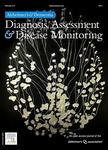版权所有:内蒙古大学图书馆 技术提供:维普资讯• 智图
内蒙古自治区呼和浩特市赛罕区大学西街235号 邮编: 010021

作者机构:Alzheimer's Disease Research Center University of Wisconsin School of Medicine and Public Health Madison WI United States Neuroscience Training Program University of Wisconsin-Madison Madison WI United States Medical Scientist Training Program University of Wisconsin-Madison Madison WI United States Department of Medical Physics University of Wisconsin School of Medicine and Public Health Madison WI United States Wisconsin Alzheimer's Institute University of Wisconsin School of Medicine and Public Health Madison WI United States Department of Radiology University of Wisconsin School of Medicine and Public Health Madison WI United States Department of Medicine University of Wisconsin School of Medicine and Public Health Madison WI United States School of Nursing University of Wisconsin-Madison Madison WI United States Geriatric Research Education and Clinical Center William S. Middleton Memorial Veterans Hospital Madison WI United States Clinical Neurochemistry Laboratory Department of Psychiatry and Neurochemistry Institute of Neuroscience and Physiology The Sahlgrenska Academy at the University of Gothenburg Mölndal Sweden Department of Molecular Neuroscience University College London Institute of Neurology London United Kingdom Waisman Laboratory for Brain Imaging and Behavior University of Wisconsin-Madison Madison WI United States
出 版 物:《Alzheimer's and Dementia: Diagnosis, Assessment and Disease Monitoring》 (Alzheimer's Dement. Diagn. Assess. Dis. Monit.)
年 卷 期:2015年第1卷第4期
页 面:420-428页
基 金:Medical Scientist Training Program, (R25GM083252, T32GM008692) Wisconsin Alzheimer's Disease Research Center, (P50-AG033514) National Center for Advancing Translational Sciences, NCATS, (UL1TR000427)
主 题:Alzheimer's disease Cardiovascular risk Circle of Willis Mean blood flow Pulsatility index
摘 要:Introduction: Although cerebrovascular disease has long been known to co-occur with Alzheimer s disease (AD), recent studies suggest an etiologic contribution to AD pathogenesis. We used four dimensional (4D)-flow magnetic resonance imaging (MRI) to evaluate blood flow and pulsatility indices in the circle of Willis. We hypothesized decreased mean blood flow and increased pulsatility, metrics indicative of poor vascular health, would be associated with cerebral atrophy and an AD cerebrospinal fluid (CSF) profile. Methods: A total of 312 patients along the AD continuum (172 middle aged, 60 cognitively healthy older, 44 mild cognitive impairment, and 36 AD) underwent MRI, CSF, and medical examinations. Regression was used to predict CSF biomarkers and atrophy from 4D-flow and analysis of covariance to compare vascular health between groups. Results: Decreased mean flow in the middle cerebral artery (MCA) and superior portion of the internal carotid artery (sICA) and increased pulsatility in the MCA were associated with greater brain atrophy. Decreased mean flow in the sICA was associated with lower amyloid beta 1-42 (Aβ42) in the CSF, a pathologic biomarker profile associated with AD. Interestingly, although metrics of flow and pulsatility differed markedly across the AD spectrum, there were no significant differences in cardiovascular risk score, mean arterial pressure, and pulse pressure across the three age-matched older cohorts. Discussion: By measuring intracranial arterial health directly with 4D-flow MRI, these data suggest that intracranial arterial health is compromised in symptomatic AD. Even after accounting for disease stage, cerebral artery health is associated with atrophy and an AD Aβ42 profile, suggesting neurovascular health may contribute to the etiopathogenesis of AD. © 2015.